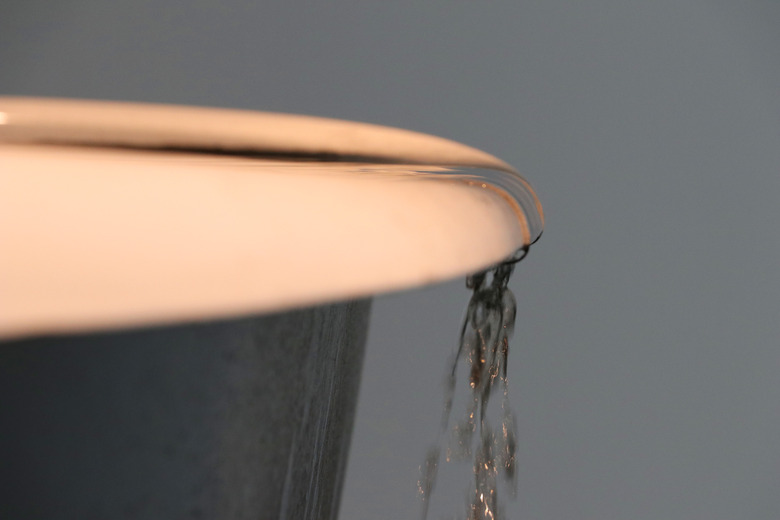How To Use Water Displacement To Calculate Volume
Measuring the volume of an irregularly shaped object using geometry is often difficult and complicated. The easiest way to do this is by using the water displacement method. Often taught in chemistry or other science classes, this method is known for its simplicity and accuracy. You'll just need to have the right equipment.
Step 1
Find a graduated cylinder or measuring cup large enough to hold the object being measured.
Step 2
Fill the graduated cylinder with adequate water. When placed in the cylinder, the object must be fully submerged in the water. Also, be careful not to put in so much water that the water level will rise past the graduated cylinder's markings when the object is submerged.
Step 3
Record the volume of the water prior to submerging the object. Call this number "a." Make sure to read the bottom of the meniscus, the curved water-level line, when calculating volume.
Step 4
Place the object in the graduated cylinder, and record the resulting water volume as "b."
Step 5
Subtract the volume of the water alone from the volume of the water plus the object. For instance, if "b" was 50 milliliters and "a" was 25 milliliters, the volume of the irregularly shaped object would be 25 milliliters.
Things Needed
- Irregularly shaped object
- Glass or plastic measuring cup or beaker
TL;DR (Too Long; Didn't Read)
If the water rises above the measuring markings of your container, an accurate reading cannot be made, and you need a bigger container.
Measure the mass of the object before placing it in the water, and then again after placing it in the water to see if the water absorbed into the object and is changing the volume of your object.
Use the smallest possible container that is sufficient for measuring the object.
The object being measured should not be dropped into the container but allowed to gently float to the bottom. This way you will not splash water onto the side of the container and mess up your measurement.
Cite This Article
MLA
Contributor, . "How To Use Water Displacement To Calculate Volume" sciencing.com, https://www.sciencing.com/use-water-displacement-measure-volume-2290862/. 29 April 2018.
APA
Contributor, . (2018, April 29). How To Use Water Displacement To Calculate Volume. sciencing.com. Retrieved from https://www.sciencing.com/use-water-displacement-measure-volume-2290862/
Chicago
Contributor, . How To Use Water Displacement To Calculate Volume last modified March 24, 2022. https://www.sciencing.com/use-water-displacement-measure-volume-2290862/
